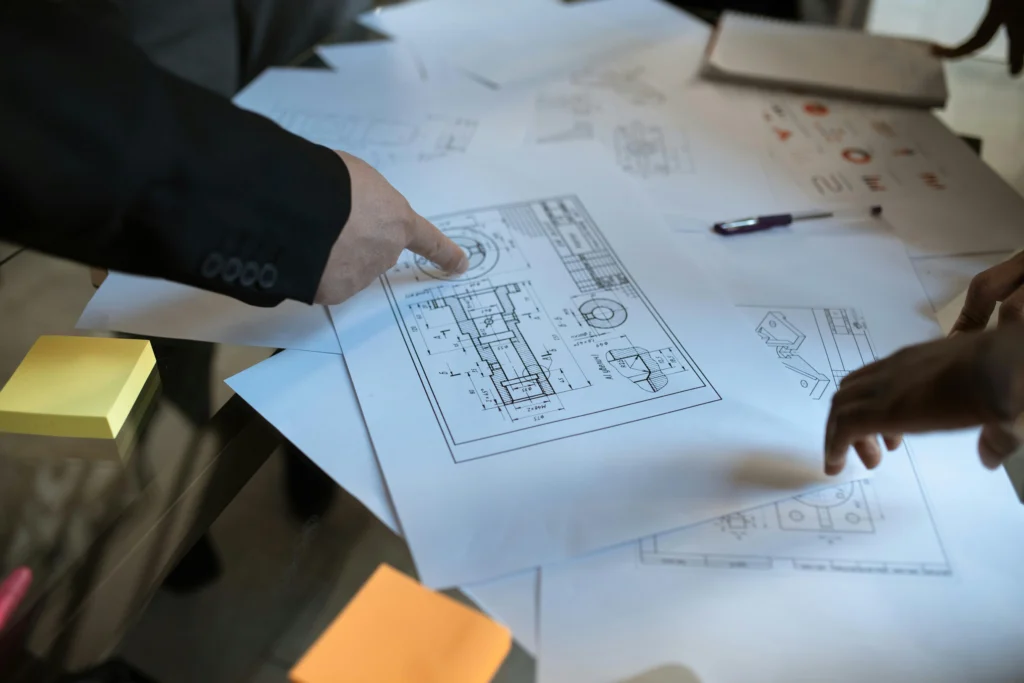To create a good, efficient, and powerful design, especially during university years, you’ll find everyone emphasizing just one thing: the concept. Most architecture students don’t understand what exactly an architectural concept is. And the surprise is, no one will explain it to you, but you’ll somehow figure it out. Let us break down the idea of an architectural concept in this blog.

What does a concept mean?
A concept is the main idea that is developed through layers upon layers, and it creates a story not just for the building you’re designing, but also for its process and how it came into being. All your design decisions should be tied together through this concept.
What is the purpose of having a concept?
Having a good concept makes your design well-tied together. It helps you create a story and pitch your idea. It gives you a reason for all your decisions. Since architectural design, like all other design fields, requires decisions that are subjective and based on personal style, having a concept makes your design more reasonable and logical.
How can I come up with a good concept?
First, you need to know what the types of concepts are. Here are some of the most common:
- Massing or volumetric concept: This is a concept that revolves around the main mass or external design of the building. It explains how you reached the final form of your building. What was the logic behind that?
- Abstract or artistic concept: This is a concept that is derived from a known artistic expression or one that is abstract and given layers through added meanings.
- Environmental or contextual concept: This is a concept that grounds the building in its context. The environment or setting it’s in should be clearly reflected in your design decisions.
- Interior spatial concept: This is when the concept revolves around the internal spaces, how they’re crafted and designed to portray a specific idea related to spatial organization or circulation.
- User-based concept: This is a concept that focuses on the user, their personality, and their needs.
Most of the time, a good and incredible concept won’t come to you right away. What usually happens is you might get a lame, repetitive idea and feel like you want to change it. However usually, this idea just needs some thinking and some research that could help you add more layers to it. This enriches the idea and makes it sound less boring or repetitive. All ideas have been repeated before, but if you develop your concept enough, think about the small details, and add more depth to your story, it will end up looking quite creative and innovative. However, sometimes you will get an incredible idea that never crossed anyone’s mind before, and this doesn’t happen often. If it happens, that’s amazing. Don’t let it go. But if it doesn’t, don’t be so hard on yourself.
How can I present this concept?
There are two very important ways to powerfully express your architectural concept.
One is through the diagrams you create. Your diagram, whether sequential or not, should tell the story of your design and concept. Simple line-drawing diagrams that are high quality are super important. You should learn the skill of visualizing your ideas and concepts through lines and telling those stories without uttering a single word. The best programs you could use for this are Rhino and SketchUp because they are free-form modeling tools and are simple enough and don’t require much effort. After creating 3D models on them to portray these ideas, transform them into 2D lines and use Illustrator or even Photoshop to post-produce them, stylize them, and add a touch of well-balanced colors.
Two is focusing on creating panels or banners for your project submissions that are well-integrated and tell the story in chronological order. Unfortunately, most students focus all their time on creating the visuals but not on designing what their panels will look like and where each visual will be placed. You need to place them in the order of what you’ll be presenting. The best tool you can use for this is Adobe InDesign. Create frames and discuss with your team what is needed. Don’t just follow the requirements for the submission. Sometimes you need to create more visuals, even ones that are simple, because your concept requires this extra diagram or visual to tell its story or explain it clearly. Use frames in InDesign as placeholders for the visuals. Focus on the spacing between those frames and how all the visuals interact together. At the end of the day, ask yourself: do your panels tell the full story without you speaking? The more they do, the more powerful your panels are.
Final Advice
Understanding and developing a strong architectural concept isn’t easy, but it’s what sets good design apart from great design. A concept isn’t just a design requirement; it’s your voice as a designer. The more thought and intention you give it, the more powerful your architecture becomes. Keep questioning, keep sketching, and let your ideas evolve. Now’s the time to revisit your own process. Is your concept doing enough?
